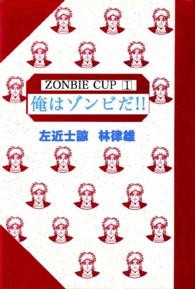Full Description
Intravascular thrombus formation remains one of the most significant problems in cardiovascular medicine. It underlies the clinical presentation of acute coronary syndromes, including unstable angina and non-ST-segment elevation myocardial infarction (NSTEMI) and ST-segment elevation myocardial infarction. More and more individuals are stricken with an acute MI and undergo a percutaneous coronary intervention (PCI). Several reasons apply, including an increasingly aged population, the growing burden of chronic risk factors such as diabetes, obesity, sedentary behaviour, and improvements in early recognition and intervention. Thrombus formation also results in substantial morbidity and mortality. Despite significant advances in prevention and treatment of venous thromboembolism, pulmonary embolism remains a common preventable cause of hospital deaths. Implementing the most appropriate, and safe, anticoagulation therapy across the spectrum of cardiovascular disease in the presence of a wide range of other risk factors remains a challenge.
Written by leading authorities in the field, Management Strategies in Antithrombotic Therapy offers a comprehensive review of antithrombotic therapy, including the latest therapies, risk factors and evidence-based strategy. The book acquaints readers with the data behind the commonly used antithrombotic agents and assists them in formulating a sound, evidence-based therapeutic strategy appropriate for each patient.
This book is an invaluable resource for all postgraduate students and specialist physicians in cardiovascular medicine, cardiac and vascular surgery, and critical care.
Contents
Abbreviations and Acronyms. Preface.
Chapter 1. Thrombosis and Antithrombotics in Vascular Disease.
1.1 The Burden of Thrombosis.
1.2 Essential components of thrombosis.
1.3 Thrombosis in the acute ischemic syndromes.
1.4 Venous thromboembolic disease.
1.5 The ideal antithrombotic agent.
Chapter 2. Aspirin.
2.1 Introduction.
2.2 Pharmacology.
2.3 Clinical uses of aspirin.
2.4 Conclusions.
Chapter 3. Thienopyridines - Ticlopidine and Clopidogrel.
3.1 Introduction.
3.2 Pharmacology.
3.3 Clinical uses of the thienopyridines.
3.4 Conclusions.
Chapter 4. Platelet Glycoprotein IIb/IIIa Inhibitors.
4.1 Introduction.
4.2 GP IIb/IIIa receptor inhibitors.
4.3 GP IIb/IIIa inhibitors during percutaneous coronary revascularization.
4.4 GP IIb/IIIa inhibitors in the management of non-st-elevation ACS.
4.5 GP IIb/IIIa inhibitors in the management of acute STEMI.
4.6 Safety of GP IIb/IIIa inhibitors.
4.7 Summary.
Chapter 5. Unfractionated Heparin.
5.1 Introduction.
5.2 Pharmacology.
5.3 Clinical uses of UH.
5.4 Clinical considerations.
5.5 Conclusions.
Chapter 6. Low-Molecular-Weight Heparins.
6.1 Introduction.
6.2 Comparisons between UH and LMWH.
6.3 Clinical uses of LMWH.
6.4 Conclusions.
Chapter 7 Direct Thrombin Inhibitors.
7.1 Introduction.
7.2 Overview of DTIs.
7.3 Clinical uses of DTIs.
7.4 Summary.
Chapter 8. Fibrinolytic agents.
8.1 Introduction.
8.2 Fibrinolytic agents for STEMI.
8.3 Fibrinolytics for VTE.
8.4 Conclusions.
Chapter 9. Acute ST-Segment-Elevation Myocardial Infarction.
9.1 Introduction.
9.2 Definitive therapy.
9.3 Adjunctive therapy.
9.4 Recommendations.
9.5 Conclusions.
Chapter 10. Acute Coronary Syndromes: Unstable Angina /Non-ST-Segment-Elevation Myocardial Infarction (NSTE ACS).
10.1 Introduction.
10.2 Antithrombotic approach to patients with ACS/NSTEMI.
10.3 Early invasive versus early conservative strategies.
10.4 Recommendations.
10.5 Conclusions.
Chapter 11 Anticoagulation Strategies for Patients Undergoing Percutaneous Coronary Intervention.
11.1 Introduction.
11.2 Antiplatelet therapy.
11.3 Antithrombotic therapy.
11.4 Special populations.
11.5 Recommendations.
11.6 Conclusions.
Chapter 12 Venous Thromboembolic Disease.
12.1 Introduction.
12.2 Risk of VTE.
12.3 Prevention of VTE.
12.4 Treatment of VTE.
12.5 Conclusions.
Chapter 13. Heparin-Induced Thrombocytopenia.
13.1 Introduction.
13.2 Incidence.
13.3 Pathogenesis.
13.4 Clinical manifestations.
13.5 Diagnosis.
13.6 Prevention.
13.7 Treatment.
13.8 Conclusions.
Index.








